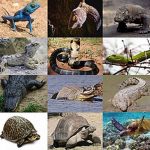Dr. N. Munal Meitei,
email:- nmunall@yahoo.in

In our tradition, it is believed that if there are more and more croaking of the toads and frogs, there will be rainfall. Though not much rich in bigger amphibians such as the crocodiles etc, Manipur is very rich in amphi-fauna. But as time passed, through more alien species of toads have increased, our original friends are decreasing day by day. The International Union for Conservation of Nature (IUCN) has calculated the percentage of endangered species as 40% of all organisms. Among them amphibians are the most affected. Amphibians, with their permeable skin, delicate membranes and semi-aquatic habitats, have long been considered to be bio-indicators. These species are generally the first to feel environmental stresses and they can provide warning signs for the overall health of ecosystems; bad news for salamanders, frogs, newts and toads means trouble for the rest of the web of life.
Unlike reptiles or birds, which have hard-shelled eggs, amphibians have jelly-like, unshelled eggs that cannot survive desiccation. Amphibians need moist climates to reproduce, and this makes them extremely sensitive to climate change. At least in some regions, amphibian losses appear to be more severe than losses in other vertebrate taxa. From an evolutionary historical perspective, amphibians may be part of a sixth major extinction event. Frogs in high mountainous areas like Manipur are most affected by global warming. As per a report, amphibians all over the world are disappearing so rapidly that they could vanish from half of their habitats in the next 20 years.
Although numerous factors are affecting amphibians, we find potential direct and indirect effects of climate change on amphibians at the individual, population and community level. Changes in climate affect the survival, growth, reproduction and dispersal capabilities of the amphibians. Moreover, climate change can alter amphibian habitats including vegetation, soil and hydrology. Climate change can influence food availability, predator-prey relationships and competitive interactions which can alter community structure. Climate change can also alter pathogen-host dynamics and greatly influence how diseases are manifested. The interactions among all these factors are complex and are probably these have driven some amphibian population declines and extinctions.
The causes for the decline of a given species may be different from region to region and even in different populations of the same species. There may be synergistic interactions between more than one factors. There may be inter-specific differences and even differences between life stages in how amphibians react to these stresses.
Global average annual temperatures are projected to rise between 1.1 and 6.4°C by 2100. The largest increases are projected for the high northern latitudes where average annual temperatures may increase more than 7.5°C. Scientists projected that species might respond to these global changes by altering their behavior and shifting ranges. However, if they are unable to adapt to these environmental changes, they have to increase mortality and significant sub-lethal effects
There is evidence that short-term changes in weather may also affect amphibian population declines. Although weather conditions are more likely to be transient, localized events rather than sustained changes in climate per se, the effects of extreme weather on amphibians may give us some insight on how amphibians may respond to long-term changes in climate. Potentially, changes in ambient temperature may influence amphibian’s behavior and could disrupt the timing of breeding, periods of hibernation and the ability to find food.
In amphibians, temperature acts as a controlling factor for many physiological processes, including rates of oxygen uptake, heartbeat, locomotion, water balance, digestion, developmental rate, sex determination and immune function. In addition, temperature can influence the concentration of dissolved oxygen in aquatic habitats, where warmer water generally has lower concentrations of oxygen. This reduction in oxygen may negatively affect developing embryos and larvae, particularly as increase in temperature increases the oxygen consumption rate in amphibians.
Water balance, which is essentially the interplay between water gain through osmosis and water loss through evaporation, also heavily influences amphibian physiology and behavior. Most amphibian species have highly vascularized permeable skin, which acts as an osmoregulatory and respiratory organ. With the exception of a few “watertight” species, water moves freely across the skin, resulting in high rates of evaporative water loss under dry or windy conditions. Changes in temperature and precipitation will influence the physiology, behavior and ecology of many amphibian species.
High temperatures may also affect sex determination in some species. Warm temperatures can result in either masculinization or feminization, depending on the species. A shift towards more males in a population may eventually reduce reproductive rates as females become a limited resource. Changes to water temperatures due to climate change will likely have a myriad of effects on amphibians, and those effects may be complex and unexpected.
All amphibians depend to some extent on the availability of freshwater for successful reproduction. Amphibians that breed in ephemeral and often isolated bodies of are especially vulnerable to changes in temperature and precipitation. Insufficient rainfall and shortened hydro periods cause catastrophic reproductive failure in pond-breeding amphibians and are likely contributors to population declines in several species thereby some of which are federally threatened or endangered.
Tadpoles (larval anurans) are found in a wide array of freshwater microhabitats where they may function as “ecosystem engineers” by altering resources and influencing other consumers. Tadpoles display a diversity of trophic modes, including herbivory, detritivory, carnivory and oophagy. Global warming may influence the availability of autotrophic organisms that contribute to the diet of many tadpoles, as higher water temperatures are expected to increase rates of primary production and nutrient cycling. Higher water temperatures can exacerbate many forms of water pollution and their associated blooms of filamentous cyanobacteria and green algae, bacteria, protozoan and small metazoans. Such changes in the relative abundances of food items are known to influence tadpole’s feeding behavior and growth responses.
Amphibians play a very important role in the natural food chain and our Eco-system. A little change in their population may affect the whole biodiversity of an area. Amphibians not only act as a barrier for insect and pest population but they are good scavengers.
In Manipur as an effect of climate change, pollution levels of most of wetlands are quite high. As such the amphibians of our state are almost affected. It caused us fear of interruption in the food chain and thereby increasing the insects and pets population in paddy fields. It is also seen that many frog species are sold and eaten in hill the districts of the state. Though, a specific data is yet to be found out, it is certain that such our amphibian friends are declining day by day. Please think for an environment where there is no croaking even on the rainy days. It is therefore our duty to save the amphibians for a balanced ecosystem.













